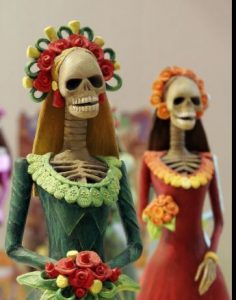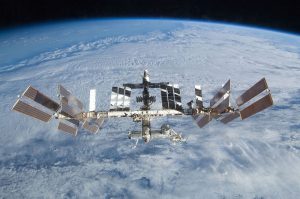I grew up in New-Zealand originally and I lived there until I was 12 years old. I remember one time my grandma came to visit us and I had never hung out with somebody who was over the age of 60 before. So, when she came, I remember for the first time realizing you know when I go and play with my brother you know I can run around and I could roughhouse. But my grandma, just getting up from a chair is really painful for her and that struck me as oh she has a disease. We should try to find a way to cure her so she can come and play with us. Then, I remember asking my parents what disease does grandma have and they said, oh she doesn’t have it, she’s just old. I was like “What disease is that?” And they were like. “No, no, you don’t understand it is a natural process”. And as a kid you’re just like that’s stupid. You know why is it a natural process that we should all get this disease that makes us so debilitated? Interview with Laura Deming, 25-year-old longevist researcher and investor. The Fight against Aging. HT Summit 2017.
Theme of the month: The influence of what we breathe on aging
Every day, we breathe in an average of about 12,000 litres of air, or 14 kilos. The air consists mainly of nitrogen (dinitrogen), a very small amount of carbon dioxide (0.03%) and about 21% oxygen, this substance that is essential to us but which, for most of life’s history, was a violent poison.
A molecule of dioxygen that enters the respiratory system will follow a path from the trachea to the blood, through the pulmonary alveoli, that is to say about 300 million tiny porous 2 square millimetre bags.
In addition to the gases mentioned, when breathing, we also unintentionally swallow a lot of substances, some of which are harmful to our body. Most of these substances will be released either almost immediately upon exhalation or by coughing or in the mucus that we evacuate by blowing our noses. But some harmful substances settle permanently in our bodies.
Although the term “pollution” sometimes covers natural substances (for example, those released in the event of a volcanic eruption), this letter will only consider the harmful effects of that which is produced by human activity.
Some of these substances can cause respiratory or nervous system disorders and even death by direct effect.
This is the case of the infamous mustard gas and Zyklon B during the two world wars of the 20th century, but it is also the case of many other chemical substances.
After the Second World War, air pollution in Europe which could be rapidly lethal developed, particularly as a result of the use of coal – which releases sulfur dioxide. As a result, what was called the Great Smog of London during the winter of 1952 (pollution so severe that visibility was sometimes reduced to a few meters) caused the death of thousands of people.
Globally today the dispersion of products with such harmful effects that they quickly lead to death is rare. However, there are still deaths, mainly in the case of accidents. Contemporary legislation on this subject is quite protective and a disaster comparable to what happened in Bhopal in 1984 with several thousand deaths is unlikely to happen again.
Another form of air pollution that has almost disappeared today is high-dose radioactive pollution. For three decades, from 1945 to 1974, hundreds of nuclear tests were carried out in the open air, releasing radioactive substances into the atmosphere in quantities and under conditions that we could no longer imagine today. There were notably around one hundred American nuclear tests 100km from Las Vegas and a Soviet test with a weapon 1,580 times more powerful than the Hiroshima and Nagasaki bombs combined.
But what remains very present, and is sometimes even increasing, in Europe and even more so in Asia, is pollution caused by so-called fine particles. These particles measuring less than one thousandth of a millimeter (one micrometer, colloquially one micron, symbolized by the µ) are introduced into the pulmonary alveoli. The smallest particles, more harmful, can even pass through the cells and into the blood. When these particles accumulate, they can cause inflammation, cardiovascular disease and respiratory diseases including cancer.
In the past, very small particles have already caused many deaths (and are still causing them), as in the cases of silicosis in miners and asbestos.
A very large part of pollution by fine particles comes from substances released into the home as a result of cooking or heating. According to the World Health Organization, this pollution causes 3.8 million deaths per year.
It is rarely covered in the media of our countries because it concerns almost exclusively the inhabitants of poor countries. Economic and technological progress would make it possible to rapidly reduce its impact as long as development choices are targeted at disadvantaged populations.
Also according to the WHO, outdoor air pollution, which also affects people in rich countries, causes 4.2 million deaths, the majority in Asia, especially in India and in China. In countries like France, this kind of pollution is generally going down but rather slowly.
The effect of air pollution on life expectancy
The significant impact on life expectancy must be clarified. The number of deaths counted by the WHO are “premature” deaths. Theoretically, a death can be “premature” by only a few weeks, which has a low impact on life expectancy.
Other studies do not only cite premature deaths, but also set a significant average loss of life expectancy, for example 10 years in New Delhi. A 1995 study measures the impact of air pollution on comparative mortality in cities in the United States. This impact is marked, even if clearly lower than the impact of tobacco consumption. However, when comparing cities and regions where pollution is higher today with other similar but less polluted cities and regions, the differences are small and not always in favor of less polluted areas.
For example, Flanders and the Netherlands have much higher levels of atmospheric pollution than other regions, but lifespans are not shorter there. The inhabitants of a fairly polluted large city such as Brussels, despite being poorer than the inhabitants of Wallonia, live longer (life expectancy in 2017 of 81.2 years in Brussels and 79.8 years in Wallonia). The city-region with the longest life expectancy in the world, Hong Kong (life expectancy 84 in 2018) is also a town with heavy atmospheric pollution. The state of Delhi, where pollution is one of the highest in the world, is the second longest-lived state in India (73 as opposed to 67 for the Indian average).
New Zealand is one of the parts of the world with the least air pollution and a country with a high standard of living and good social protection. In this country, life expectancy (82 years) is similar to that of equivalent countries with high pollution.
While smoking or not, being obese or not, living in a rich country or not, has a measurable effect on life expectancy statistics, the pollution variable is not very visible in terms of statistical comparisons. However, there is little doubt that breathing fine particles is harmful. The most likely thing is that the mortality rate caused is lower than estimated at current levels of pollution. Overestimation of the adverse effects of human actions is quite common in the contemporary world, whereas in the past these effects could be underestimated. It could also be that, overall, living in large cities, which are generally more polluted than the countryside, also has health benefits (better medical and social coverage, more active life, etc.).
Could our air quality explain the mystery of the supercentenarians?
The above comments concern the impact of pollution on average life expectancy, not on maximum life expectancy. Air pollution could well be one of the factors explaining “the mystery of the supercentenarians”, namely the fact that the maximum lifespan of women and men has not increased for decades. It is possible that the accumulation of microparticles and the prolonged effect of exposure to anthropogenic toxic substances may offset medical advances.
There may even be a “silent killer” that we have not yet detected and that has an effect especially in the very long term. This could concern substances with little-known toxicity that gradually combine in the body to form toxic “cocktails”.
However, in this hypothesis, it remains to be explained why there are no longer extreme longevities in the least polluted areas of the planet with good medical coverage. According to the WHO, only 9% of the world’s population lives in areas exposed to less pollution than the recommended standards. These notably include New Zealand, already mentioned, where the oldest living person currently living is “only” 110 years old, while, for example, the oldest woman in Brussels is 111.
Research to be pursued for a common goal: a much longer healthy life than in the past
As we have written in this letter, much remains to be done in research on air pollution. One of the most uncomfortable aspects of research on toxic substances is the issue of low doses. Some argue that any dose of certain substances is harmful, without any threshold effect; others argue that products that are harmful at high doses have no effect or even a positive effect (hormesis) at low doses.
Debates at these levels are sensitive. Proponents of laissez-faire are quick to assert that there is an exaggeration of risk and will quickly make use of doubts about the medium and long-term effects of low doses to refuse any action. This is particularly true for exposure to fine particles. This refusal is all the more “tempting” for some because the most polluted areas are generally the poorest overall.
In this area, as in others, the precautionary principle must be applied in a proactive way. It is not a question of doing nothing and forbidding change, but of examining, better understanding and preventing the negative impacts of substances released into the air by both existing and proposed technologies. Upcoming monthly letters may address this subject to provide more information.
It is notably through better hygiene and environmental conditions that the average lifespan has more than doubled since the 19th century. The reduction in air pollution has played a positive role so far. Avoiding exposure to new harmful elements resulting from technological progress, or even, who knows, one day discovering useful breathable elements, concerns millions of lives today and tomorrow and is one of the essential aspects of thinking for a much longer healthy life.
The good news of the month: Undoing Aging in Berlin, the largest longevity science conference to date
From March 28-30, Undoing Aging, the largest conference ever held on research perspectives for a much longer healthy life, was held in Berlin. Some of the most renowned scientists not only exchanged with each other but also with journalists, activists and many potential investors. However make no mistake, it is exaggerated to say that the giants of Silicon Valley all want to “defeat death” and are close to it.
While the bubbling of ideas, enthusiasm and goodwill from Berlin and elsewhere is useful and spreading, current investments will have to increase, especially those from public authorities.
For more information:
- In general, see in particular: heales.org, sens.org, longevityalliance.org and longecity.org
- Photo : Smog trapped under an inversion in Almaty, Kazakhstan





 Never ever, for the vast majority of humans and with regard to the vast majority of humans, will we wish another person dead.
Never ever, for the vast majority of humans and with regard to the vast majority of humans, will we wish another person dead. 
 Very often, those to whom we talk about human longevity imagine a world of decrepit old people with no energy. However, scientific research on aging aims to reduce and even stop the aging processes.
Very often, those to whom we talk about human longevity imagine a world of decrepit old people with no energy. However, scientific research on aging aims to reduce and even stop the aging processes.


